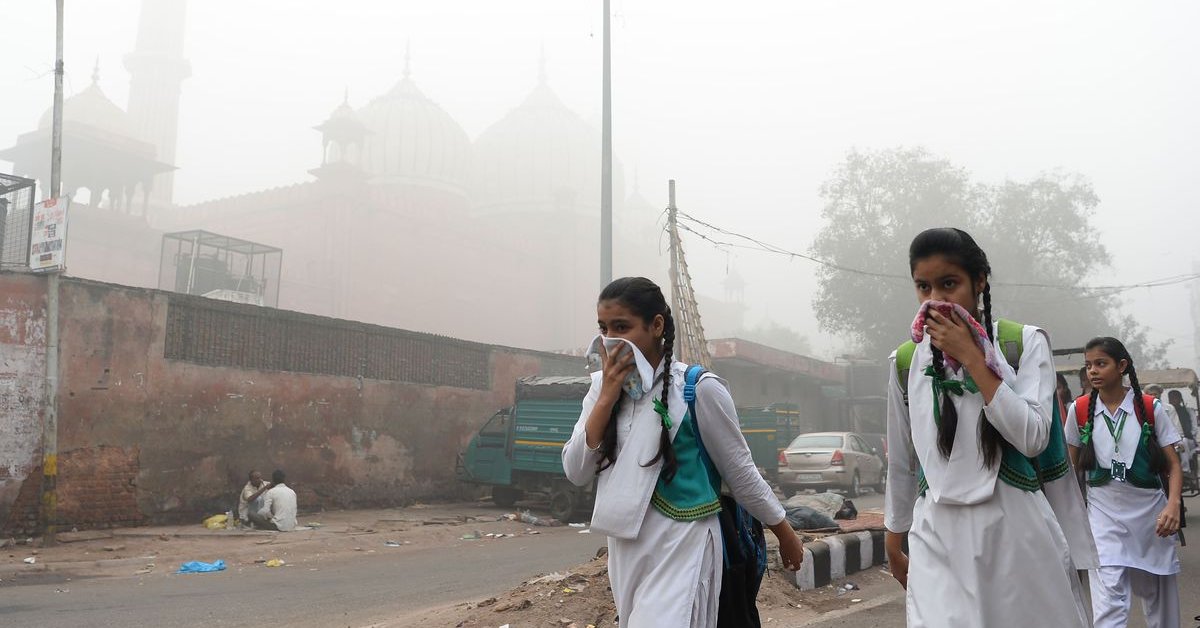Can Facial Masks And Respirators Protect Us From The Severe Polluted Air In Delhi?
Author - Nov 05, 2018

Facial masks and respirators are indispensable things to protect us from the dust or vehicle emission in the air, especially in such polluted places as Delhi.
Facial masks and respirators are indispensable things to protect us from the dust or vehicle emission in the air, especially in such polluted places as Delhi. Along with the rising air pollution, people in Delhi are putting many interests into measures to protect themselves from the surrounding toxic atmosphere. Can such products protect us or not? How can we choose the most suitable one?
The advantages of facial masks and respirators are that they can prevent liquid and airborne particulate matter at two sizes including PM10 and PM2.5. However, some materials such as gases, vapors, and chemicals can still penetrate partly through these products.
Of course, when you wear a respirator properly, its efficiency will surely improve significantly. It can help you to prevent gases emitted from vehicles or avoid being infected bacteria and viruses floating in the air. In addition, the rate to suffer from heart and respiratory disease will probably be lower with such equipment.
The filtering respirators like N-95 ones only show the optimal efficiency into preventing viruses and the like when it is the first use. From the second use, viruses may be stick to your own respirator. That makes nonsense if you use a dirty mask or respirator to protect your respiratory system.
Those who have a history of heart disease, infections or chronic respiratory ones should ask their doctor for advice before spending money on respirators because these devices may make them difficult to breathe. In some cases, it’s very dangerous!
According to a study in China, facial masks and respirators that have been popular in the market can’t protect users 100% from toxic matters because there are always gaps between our faces and facial masks.
In 2018, the BMJ journal, Occupational and Environmental Medicine declared a study that facial masks should be focused more on design, as well as consumers should be guided more directly.
Also in a China study when testing nine masks’ filtration performance, the penetration of particulates PM 2.5 lies from 0.26%-29%. The amount will vary based on the material chosen to create masks and the flow rate of particulates.
Considering the average total inward leakage, when doing the sedentary tests and the active test on four of the abovementioned masks, the ranges are 3%-68% and 7%-66%, respectively. In these two tests, only one mask type gets the index lower than 10%.
It’s unfortunate that the masks’ effectiveness often doesn’t reach as high as it is certified. Apart from the reason given in the previous, they are depending on when we move on the street.
The indexes “N95” and “N99” often caught in the test conditions demonstrate the capabilities to filter 95% and 99% of tiny particles (with the dimension of 0.3 microns), respectively. However, that doesn’t mean products with these indexes can remove completely the risk to contact air pollution.
Citing from many sources, people in Delhi may die earlier than usual due to severe air pollution. Therefore, the measures to protect health from the pollution in Delhi are being focused a lot. Don’t use the single-use masks and respirators for the second time!
Featured Stories

Features - Jul 01, 2025
What Are The Fastest Passenger Vehicles Ever Created?

Features - Jun 25, 2025
Japan Hydrogen Breakthrough: Scientists Crack the Clean Energy Code with...

ICT News - Jun 25, 2025
AI Intimidation Tactics: CEOs Turn Flawed Technology Into Employee Fear Machine

Review - Jun 25, 2025
Windows 11 Problems: Is Microsoft's "Best" OS Actually Getting Worse?

Features - Jun 22, 2025
Telegram Founder Pavel Durov Plans to Split $14 Billion Fortune Among 106 Children

ICT News - Jun 22, 2025
Neuralink Telepathy Chip Enables Quadriplegic Rob Greiner to Control Games with...

Features - Jun 21, 2025
This Over $100 Bottle Has Nothing But Fresh Air Inside

Features - Jun 18, 2025
Best Mobile VPN Apps for Gaming 2025: Complete Guide

Features - Jun 18, 2025
A Math Formula Tells Us How Long Everything Will Live

Features - Jun 16, 2025


Comments
Sort by Newest | Popular